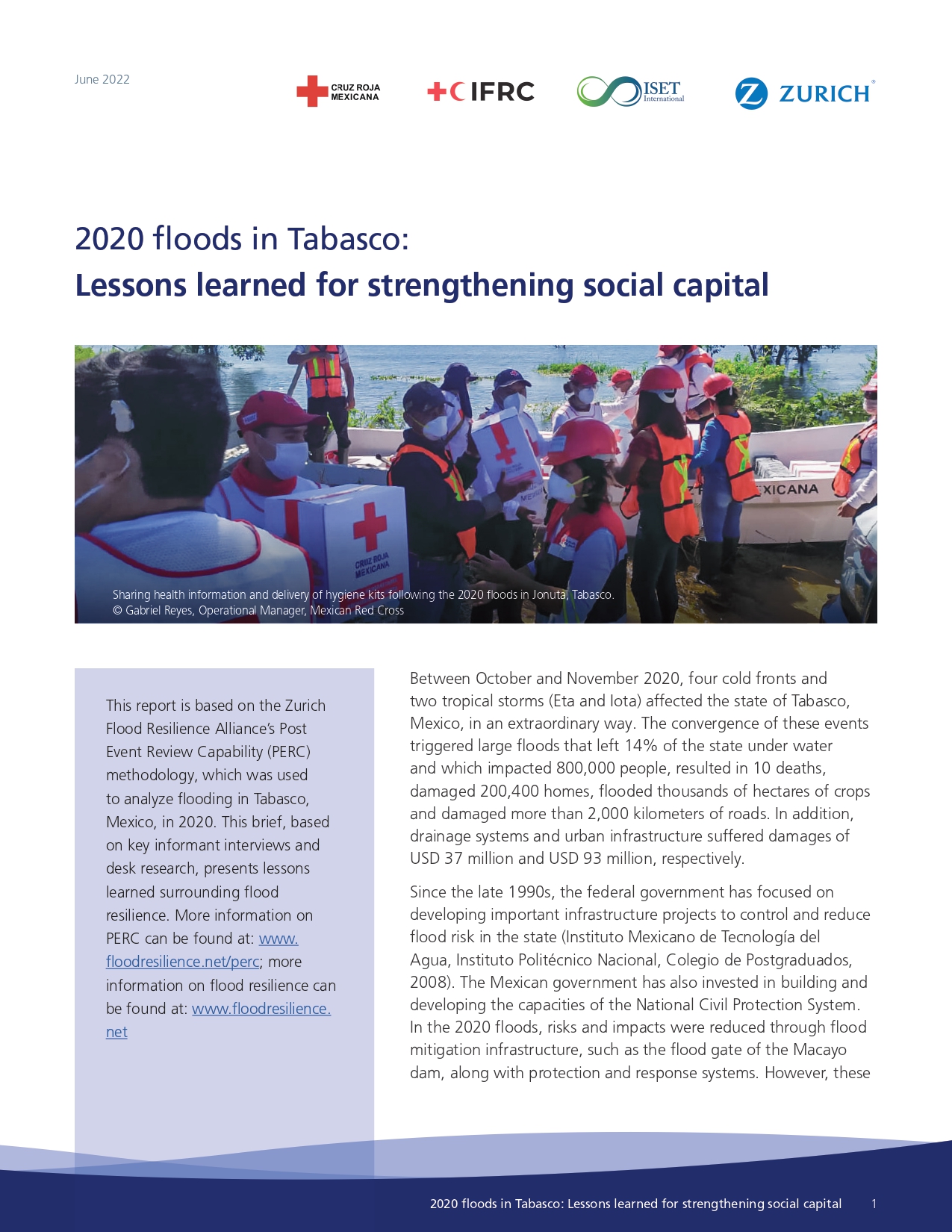2020 floods in Tabasco: Lessons learned for strengthening social capital

In October and November of 2020, a series of cold fronts and two cyclones caused severe flooding in the states of Chiapas, Tabasco, and Veracruz, Mexico. Tabasco also received significant rainfall in the month of November. Floods, landslides and the discharge of water from the Angel Albino Corzo “Peñitas” hydroelectric dam left the region under water. In total, the storms and resulting floods inundated 14% of the state and affected approximately 800,000 people, damaged close to 200,400 houses and flooded thousands of hectares of crops throughout the state.
The Mexican Red Cross, in collaboration with ISET, IFRC and Zurich Mexico, conducted a Post-Event Review Capability (PERC), which reflects on the causes of the 2020 floods in Tabasco, Mexico, and presents recommendations that contribute to risk management. The 2020 floods illustrated that physical infrastructure can only mitigate part of the risk. Considering these factors, governments, communities and other stakeholders must develop complementary risk reduction capacities, in particular the human and social capacities of communities.
In addition to the full report, you can also find the following PERC related products:
Puede encontrar el informe completo, el resumen ejecutivo y el resumen de políticas en español aquí.
